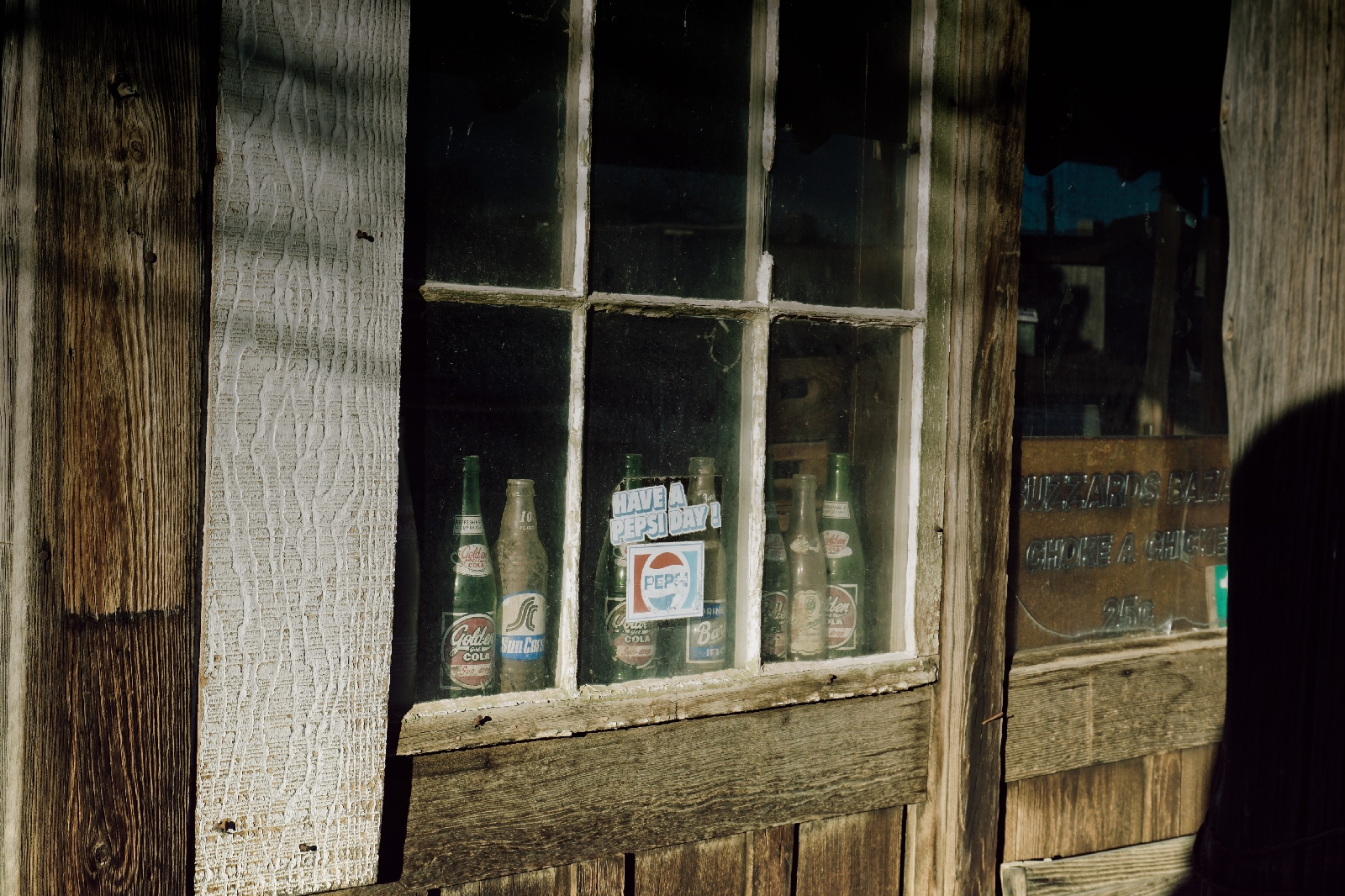Rolling through Dewey-Humboldt on Highway 69 toward Prescott, behind the Shell station where the highway intersects Main Street, there's a small strip mall adorned with the conspicuously false and decorative facade of an old Western town. Here you'll find the Yavapai County Sheriff's Office, Town Hall, a boutique and variety of small businesses. The large Sheriff's SUV perpetually parked outside of the "Glassy Garden Gift Boutique" might make you smile. The small town of Dewey-Humboldt erected this tribute to its pioneer days. Continue down Main Street, however, and you step back into history where turn of the century buildings still stand with renewed purpose.
The old Humboldt Main Street is vacant, but for a few cars. The 1906 Humboldt smelter barricaded at the end of the road, bricks spiraling up toward the sky, looms in the distance. Behind warning signs for the now superfund site, it's an ironic and melancholy reminder of the need to heal and repair from the progress and ingenuity that spurred this community into being.
Yet amid the quiet stillness of this ghost-town-like pocket of modern Dewey-Humboldt (the two formerly separate towns "wedded through incorporation" in 2004, per the town's website) the aroma of pizza wafts from the original post office erected in 1910. The beautiful brick bank ("erected in 1918" etched in a stone placard) adjacent a 1917 hotel, stately and conspicuously fortified compared to its contemporaries, now serving as a private residence. Behind the bank, the Humboldt Agua Fria Christian Church (1907), complete with bell and steeple, and the Iron King Mine water tower (1906) will have you convinced you've found yourself in an old Western train diorama.
Turn the corner toward Prescott Street and you'll face a vestige of the Old West, still standing, that will bolster that notion and stoke your imagination. A ramshackle, almost miniature, Old West strip mall, nearly in the middle of the road. Dusty antique soda bottles fill a windowsill adjacent to an antique, crude wooden platform for sitting, this turn of the century structure is a real relic of the pioneer days.
The facade of the small structures include the classic Western false front, high reaching parapets adding stature to otherwise humble structures. You've seen it before in Old West movies, or for Disneyland fans it might conjure up the miniature pioneer village at the end of Thunder Mountain Railroad, colorful period vocalizations calling your attention to a tiny clothesline and miniature saloon. It stands ghostly in a neighborhood that seems to exist despite its presence. A crude go-cart whizzing past. Dogs barking, kids running through the street. Behind barb wire, adorned with Private Property signs and a subtle sticker speaking to the rapidity of police response, you can stand next to it and nearly touch it.
Historic Humboldt is a great stop if you are in the area and enjoy Ghost Towns and rugged Arizona history. It is not Jerome or Chloride, where stark historic buildings give way to artists havens and B&B's. Rather, the charming street signs installed throughout seem to highlight the disconnect between the folksy facade on Highway 69 and the real historic relics that continue to exist without the fanfare of the tourist scene, the likes of Jerome or even Chloride. Yet, there's an unsung authenticity here that may fascinate some looking to see a glimpse into Arizona's past.
More about the former Iron King Mine and Humboldt Smelter: the property was placed on the EPA's National Priorities List in 2008. The City's website discusses measures that have been taken to keep teenagers and children out of the heavily contaminated area, which includes arsenic and lead. This designated EPA website discusses the history of the mine and smelter's activities, as well as efforts taken to prevent contamination of the Agua Fria River. According to this article, mining at the site continued to 1970, having peaked during the World War I era. EPA: Iron King Mine, Humboldt Smelter








Comments
Post a Comment